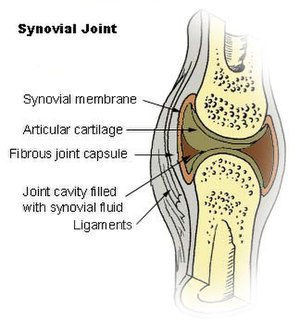Are You On Your Way to Getting Arthritis?
Arthritis, which translates to “irritation of a joint,” has the potential to develop into a debilitating condition that can significantly reduce your activities of daily living (ADL) and quality of life. It involves pain, stiffness and understandably a reduced ability to move and engage in exercise. Lack of exercise/ mobility promotes weight gain, which can make the arthritis worse as the joint surfaces bear increased weight.
If the pain is strong enough, sufferers resort to over-the-counter medications such as acetaminophen (Tylenol, Paracetamol), NSAIDs, or non-steroidal anti-inflammatories (Ibuprofen, Naproxen); and if the pain is severe, opioid drugs. All of these drugs have dangerous side effects, which become more significant if they are taken long term. This includes liver damage, gastrointestinal problems, muscle and joint pain, and for opioids, constipation, nausea and drug addiction/dependency.
Today, I will address specifically osteoarthritis, or OA. It is the most common form of arthritis and is the major cause of disability in persons aged 65 and over. Osteoarthritis affects primarily the weight-bearing joints such as the ankles, knees, hips, lower spine and lower neck. It starts out non-inflammatory (unlike rheumatoid arthritis, which is an inflammatory auto-immune form of arthritis) and involves gradual wear and tear of the cartilage surfaces of the ends of the bones that form the joint. In advanced stages, the damaged cartilage triggers mild inflammation (swelling, increased vascularity, increased pain) and the condition is better described as inflammatory osteoarthritis.
Osteoarthritis has systemic risk factors and local risk factors.
Systemic risk factors include age, sex, race, bone density, genetic factors, nutrition and hormonal status (which is related to age).
- Black Americans have a higher incidence of OA than white Americans; however the association may be rooted in demographics/ cultural factors rather than genetics.
- Reduced production of human growth hormone (HGH) and the sex hormones (estrogen, testosterone) are associated with reduced cartilage pliability; i.e. increased brittleness and less thickness.
- Cartilage is thought to be highly vulnerable to oxidative stress (free radical damage, oxidation), and high doses of vitamin C and D are protective against the development of OA. Smoking, pollution and a diet high in processed food are factors that promote oxidative stress.
Local risk factors include obesity, occupation, prior joint injuries, existing joint instability, sports/physical activities and congenital joint abnormalities.
- Obese individuals experience increased pressure in their weight bearing joints when standing or sitting. This can force water content out of the cartilage and lead to small tears which then lead to larger tears and “bone on bone” contact within the joint.
- Occupations that involve repetitious trauma/ forces to the joints increase risk for OA.
- Sports, especially football, basketball, long distance running and gymnastics can result in accelerated cartilage degeneration especially after age 40.
- Prior injuries/ trauma that subluxated or misaligned a joint will predispose it to accelerated OA as the joint loses its normal mechanical function. The joint surfaces may not articulate properly, and weight distribution along the surface may become uneven following trauma.
- Congenital anomalies such as scoliosis and fused vertebral segments can also alter normal joint movement and promote accelerated OA.
- Weak muscles can deprive joints of protection and stability, predisposing them to OA. Weak muscles are related to sedentary lifestyles, whether by choice or secondary to an incapacitating condition like advanced Type 2 diabetes.
The bottom line:
If you have systemic risk factors, think in terms of diet and nutrition to ward of their effects. You can’t control aging, you can’t control your sex and race, but you can control the level of oxidative stress in your body and you can “down-regulate” genes that may predispose you to arthritis by adopting a healthy diet and lifestyle.
If you also have several local risk factors for OA, think in terms of minimizing their effects. Unstable joints from prior injuries can benefit from targeted exercises that strengthen the joint; perhaps some occasional spinal and/or extremity adjustments from a chiropractor or therapist; supports/orthotics as applicable; and avoiding activities which over-stress the affected joint. For example, if you have a spondylolisthesis, it’s best to avoid running and instead do speed walking or use an elliptical machine to get your cardio exercise.
If you are suffering from chronic pain in your muscles and joints, nerves and ligaments, stay tuned for a new multi-media educational course being developed, Get Rid of Pain Forever. To receive notice of its launch, visit here.









